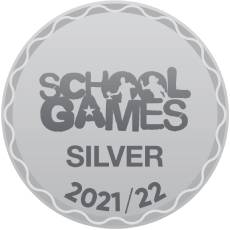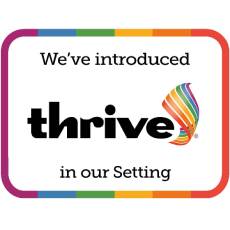D&T

Here at St Mary's we use the 'Kapow' scheme of work to structure our learning throughout the school. The scheme enables us to create purposeful, inspiring and enriching lessons, which children thoroughly enjoy. Children are given the knowledge and skills to design, make and evaluate work whilst building positive relationships with others, living as part of God's community. All children are encouraged to use equipment safely and appropriately and are given opportunities to work together as a team. The quality teaching of design technology allows for a wide variety of opportunities, including learning new skills needed for the real world through a practical approach to lessons. Cooking and Nutrition is highly popular amongst the children and they really do cook up a storm!
Across the different Key Stages children will lean the following D&T skills:
Early years foundation stage (EYFS)
All pupils in the EYFS are taught art, design and D&T as an integral part of the topic work covered during the academic year. The art, design and D&T curriculum in the EYFS has a particular focus on the specific areas of expressive arts and design and understanding the world.
In the EYFS, pupils will be taught to:
- Recognise that a range of technology is used in places such as at home and in schools.
- Select and use technology for particular purposes.
- Safely use and explore a variety of materials, tools and techniques, experimenting with colour, design, texture, form and function.
- Represent their own ideas, thoughts and feelings through D&T, art, music, dance, role-play and storytelling.
KS1
By the end of KS1, pupils will be taught to develop the abilities outlined below:
Design
- To design purposeful, functional and appealing products for themselves and other users based on design criteria.
- To generate, develop, model and communicate their ideas through talking, drawing, templates and mock-ups and, where appropriate, information and communication technology.
Make
- To select from and use a range of tools and equipment to perform practical tasks, e.g. cutting, shaping, joining and finishing.
- To select from and use a wide range of materials and components, including construction materials, textiles and ingredients, according to their characteristics.
Evaluate
- To explore and evaluate a range of existing products.
- To evaluate their ideas and products against design criteria.
Technical knowledge
- To build structures, exploring how they can be made stronger, stiffer and more stable.
- To explore and use mechanisms, e.g. levers, sliders, wheels and axles, in their products.
Through a variety of creative and practical activities, pupils will be taught the knowledge, understanding and skills needed to progress to KS2.
Pupils will work in a range of relevant contexts, e.g. the home, school, leisure, enterprise, industry and the wider environment.
KS2
By the end of KS2, pupils will be taught to develop the abilities outlined in this section.
Design
- To use, research and develop design criteria to inform the design of innovative, functional and appealing products that are fit for purpose, aimed at particular individuals or groups.
- To generate, develop, model and communicate their ideas through discussion, annotated sketches, cross-sectional and exploded diagrams, prototypes, pattern pieces and computer-aided design.
Make
- To select from and use a wider range of tools and equipment to perform practical tasks accurately, e.g. cutting, shaping, joining and finishing.
- To select from and use a wider range of materials and components, including construction materials, textiles, and ingredients, according to their functional properties and aesthetic qualities.
Evaluate
- To investigate and analyse a range of existing products.
- To evaluate their ideas and products against their own design criteria and consider the views of others to improve their work.
- To understand how key events and individuals in D&T have helped shape the world.
Technical Knowledge
- To understand and use mechanical systems in their products, e.g. gears, pulleys, cams, levers, and linkages.
- To apply their understanding of how to strengthen, stiffen and reinforce more complex structures.
- To understand and use electrical systems in their products, e.g. series circuits incorporating switches, bulbs, buzzers and motors.
- To apply their understanding of computing to program, monitor and control their products.
Cooking and nutrition
As part of their work with food, pupils should be taught how to cook and apply the principles of nutrition and healthy eating. Instilling a love of cooking in pupils will also open a door to one of the greatest expressions of human creativity. Learning how to cook is a crucial life skill that enables pupils to feed themselves and others affordably and well, now and in later life.
By the end of KS1, pupils will be taught to:
- Use the basic principles of a healthy and varied diet to prepare dishes.
- Understand where food comes from.
By the end of KS2, pupils will be taught to:
- Understand and apply the principles of a healthy and varied diet.
- Understand seasonality, and know where and how a variety of ingredients are grown, reared, caught and processed.
- Prepare and cook a variety of predominantly savoury dishes using a range of cooking techniques.


